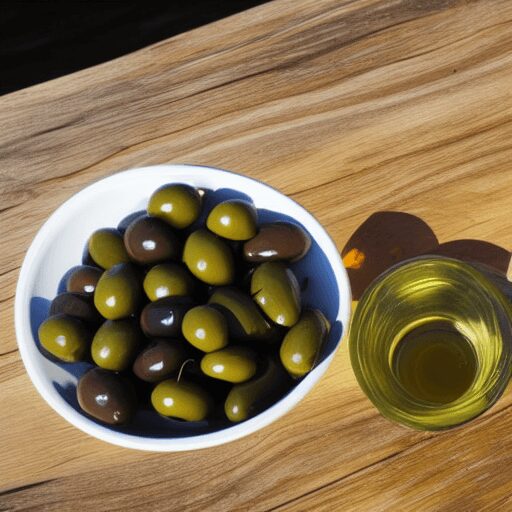The Best Olive Oil for Cooking: Baking and Frying
When it comes to cooking, olive oil is one of the most popular choices. But with so many different types of olive oil on the market, it can be hard to know which one is the best to use. In this blog post, we’ll take a look at some of the best olive oils for cooking, as well as some tips on how to choose the right one for your needs.
Extra Virgin Olive Oil

Extra virgin olive oil is made from pure, cold-pressed olives. It has a fruity, peppery flavor and a slightly bitter aftertaste. It’s also the most expensive and has the shortest shelf life of all olive oils. Extra virgin olive oil is best used for dipping, drizzling, or in dressings and marinades.
With a lower smoke point than other types of oil, it’s not ideal for frying.
Virgin Olive Oil
Virgin olive oil is also made from pure, cold-pressed olives. However, it doesn’t meet the stringent standards required to be classified as extra virgin. Virgin olive oil has a milder flavor than extra virgin and can be used for cooking or in dressings and marinades.
With a slightly higher smoke point than EVOO, it’s better suited for cooking at high temperatures.
Refined Olive Oil
Refined olive oil is made from a blend of cold-pressed and processed olives. It has a neutral flavor and a high smoke point, making it ideal for cooking at high temperatures. Refined olive oil is also less expensive than extra virgin or virgin olive oils.
Because it is refined, it has a higher smoke point than both extra virgin and virgin, making it the best choice for frying. It also has a neutral flavor, so it won’t alter the taste of your food.
Blend

Can you mix refined and extra virgin olive oil? The answer is yes, you can. In fact, it is recommended that you mix the two oils when cooking. The reason for this is that extra virgin has a lower smoke point than refined, which means it will start to smoke and degrade at a lower temperature. By mixing the two oils together, you can create a more stable mixture that can withstand higher temperatures without smoking or degrading.
How Much Should You Use?

The general rule of thumb is to use 1-2 tablespoons of olive oil per person. Of course, this depends on the dish you’re making. A salad will require less olive oil than a pasta dish, for example.
When it comes to marinades, you’ll want to use enough olive oil to coat the food. The acidity in the olive oil helps to break down the tough fibers in meats, making them more tender and flavorful.
As a general rule of thumb, use 1/4 cup of olive oil for every pound of meat. For vegetables, use 1-2 tablespoons per pound. Keep in mind that these are only guidelines—you may need to use more or less depending on the dish you’re making.
Roasting
Can you roast with olive oil? The answer is yes, you can. We recommend refined varieties as they can withstand high temperatures without burning. When roasting with olive oil, it is important to use a light hand so that the food does not become greasy.
Olive oil can be used to roast all sorts of different foods. Meats such as chicken, beef, and pork are all good candidates for roasting with olive oil. Vegetables such as potatoes, carrots, and squash are also good choices. One of the best things about roasted food is that it often takes on a golden brown color. This happens because the natural sugars in the food caramelize when they come into contact with the heat source.
Baking
Some tips and tricks for using olive oil in your baking:
Use a pastry brush to evenly coat your pan with olive oil before baking. This will help prevent sticking and ensure even browning.
Add a little bit of olive oil to dry ingredients like flour or bread crumbs to give them a light coating. This will help them adhere better to wet ingredients like eggs or dough.
Use a tablespoon or two of olive oil in place of butter or other fats in recipes like cakes, muffins, or quick bread. Olive oil provides moisture and tenderness without adding too much fat.
Drizzle some finished baked goods with a little bit of olive oil for extra flavor and richness. This is especially good with fruits like citrus or strawberries.
Best Brands
With so many brands to choose from, how do you know which one is right for you?
Here are just a few of the best brands of olive oil that you can find on store shelves today:
1. Filipo Berio: Another excellent Italian brand, Filipo Berio offers a slightly milder flavor than Berio. It’s also a bit more expensive, but many people think it’s worth the extra cost.
2. Lily White: This American brand is a good choice for those who want a lighter-tasting olive oil. It has a gentle flavor that won’t overwhelm other ingredients in your dish.
3. Navismotor: This Spanish brand is known for its robust flavor and affordable price tag. If you’re looking for olive oil that packs a punch, Navismotor is worth checking out.
Is Olive Oil Healthy?
Olive oil is certainly better for you than other oils, such as canola oil or vegetable oil. It’s lower in saturated fats and higher in monounsaturated fats, which are beneficial for your heart. In moderation, olive oil can help to lower cholesterol and improve blood sugar control.
But while olive oil may be healthier than other oils, don’t go overboard. All types of fat are high in calories—one tablespoon has 120 calories and 14 grams of fat, only two of which are saturated.
